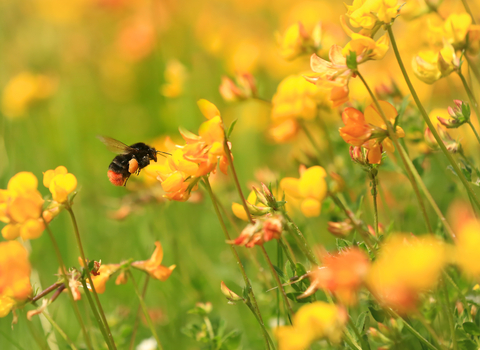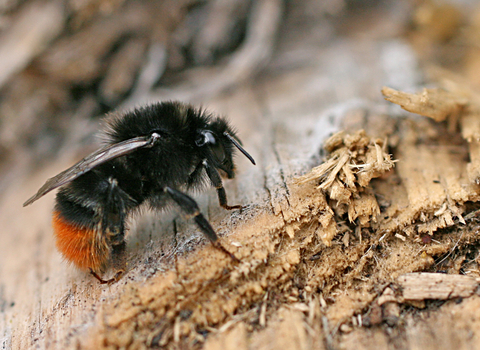
Red-tailed bumblebee ©Jon Hawkins - Surrey Hills Photography

Red-tailed Bumblebee ©Penny Frith
Red-tailed bumblebee
Living up to its name, the red-tailed bumblebee is black with a big, red 'tail'.
Scientific name
Bombus lapidariusWhen to see
April to NovemberSpecies information
Category
Statistics
Length: 2.2cmCommon.
About
The red-tailed bumblebee is a very common bumblebee, emerging early in the spring and feeding on flowers right through to the autumn. It can be found in gardens, farmland, woodland edges, hedgerows and heathland: anywhere there are flowers to feed on. It is a social bee, nesting in old burrows, or under stones. As with other social insects, the queen emerges from hibernation in spring and starts the colony by laying a few eggs that hatch as workers; these workers tend the young and nest. Males emerge later and mate with new females who are prospective queens. Both the males and old queen die in the autumn, but the new queens hibernate.How to identify
The female red-tailed bumblebee is a very large, black bumblebee with a big red 'tail'. Males are smaller and as well as the red tail some males have two yellow bands on the thorax and one at the base of the abdomen - however usually this is very faint. There are two other similar species of bumblebee, but both are much rarer.Distribution
Widespread.In our area
We'd love to know if you've seen a red-tailed bumblebee in Worcestershire. Please take a photo and let us know where and when you took it via our short wildlife sightings form. Thank you!
Did you know?
Red-tailed bumblebees nest underground, often in old vole burrows, under stones, or at the base of old walls.We'd love to know if you've seen a red-tailed bumblebee in Worcestershire. Please take a photo and let us know where and when you took it via our short wildlife sightings form. Thank you!
